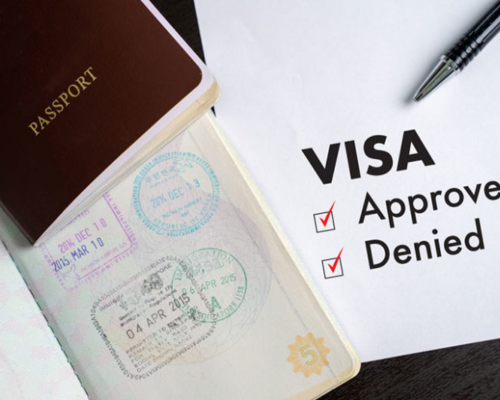
Receiving a Schengen visa rejection can be a significant setback, leaving you with two primary choices: appealing the decision or reapplying for a new visa. Each choice comes with its own benefits and considerations. This guide will help you determine the best course of action and how to proceed effectively.
Schengen Visa Appeal vs. Reapply: Which Option is Right for You?
How to appeal for schengen visa refusal? Requesting a Review
An Schengen Visa Appeal involves asking for a reevaluation of your visa application, typically when you believe that the initial decision was incorrect. Consider appealing if:
Your Documentation Was Correct: You are confident that all your documents were accurate and complete.
You Can Prove Financial Stability: If your previous rejection was due to insufficient financial evidence, and you have additional proof of funds.
You Have Time: Appeals can be a lengthy process, so if your travel plans are flexible, this may be a suitable choice.
Cost Concerns: Schengen visa refusal appeal is often less costly than reapplying because you might not need to pay a new visa fee.
Specific Alerts: If there is a specific alert against you, addressing it through an appeal may be necessary.
Schengen visa rejection reapply: Starting Fresh
Reapplying means beginning the visa process anew, which might be appropriate if:
Issues Have Been Addressed: You have corrected the reasons for the initial rejection and have updated your documents accordingly.
Urgent Travel Needs: If you need to travel soon, reapplying may be faster than waiting for an appeal outcome.
Prepared to Invest: Reapplying involves paying the visa fee again and potentially additional service fees.
Steps for Reapplying After a Rejection
Submit a Complete Application
Ensure that your new application is thorough and accurate. Key documents usually include:
A completed and signed visa application form.
Two recent passport-sized photos.
A passport that remains valid for a minimum of three months after your planned departure from the Schengen Area.
Detailed flight itineraries showing your arrival and departure dates along with flight numbers.
Evidence of travel health insurance providing coverage of at least €30,000 for medical emergencies.
Accommodation details, such as hotel bookings or an invitation letter from a host.
Evidence of sufficient funds to cover your stay, such as bank statements or a sponsorship letter.
Proof of visa fee payment (typically €90, but it may vary).
Understand the Schengen Visa Rejection Reasons
Carefully review the reasons provided in your rejection letter to identify the issues with your initial application. Common reasons for refusal include:
Unclear Travel Itinerary: Ensure your travel plans are detailed and verifiable.
Insufficient Financial Proof: Provide comprehensive and updated financial documentation.
Unclear Purpose of Visit: Provide a clear explanation of the reason for your trip and your plans to return to your home country..
Address these issues in your new application to reduce the chances of another rejection.
Prepare a Detailed Cover Letter
If you believe your previous visa application was unjustly denied, include a cover letter with your new application. This letter should:
Address the reasons for the initial rejection.
Explain how you have resolved these issues.
Restate your travel plans and intentions.
Make sure the cover letter is honest, consistent with your application, and includes any new information or documents.
Secure Travel Insurance
Obtain travel insurance that meets Schengen visa requirements. The insurance needs to offer a minimum coverage of €30,000 for medical costs, including hospital stays, and be effective for the entire period of your visit to the Schengen Area.
Whether you choose to appeal or reapply, ensure that all your documents are accurate and up-to-date. Verify any specific requirements with the relevant embassy or consulate to ensure you provide all necessary information. Being meticulous and well-prepared can significantly increase your likelihood of obtaining a successful visa.
By carefully considering your options and following these steps, you can navigate the process of reapplying for a Schengen visa more effectively and enhance your prospects of obtaining the visa needed for your travel.